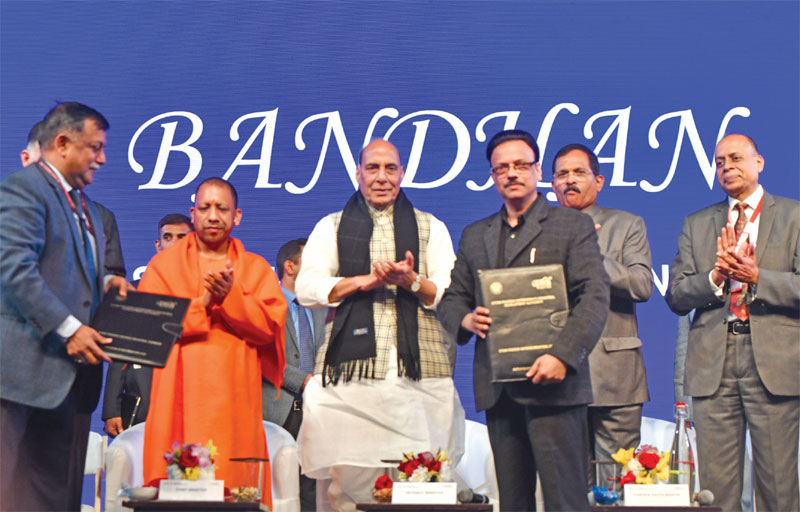The UP and Tamil Nadu defence corridors would boost the economy and further the government’s Make in India policy
Smruti D
During the presentation of the Union Budget 2018-19, then finance minister Arun Jaitley announced the setting up of two industrial corridors. The idea behind this was to boost the production in defence sector in both private and public sectors by encouraging investments and roping in small and medium scale vendors to contribute in production of defence armaments.

Even as the government has unveiled policies and invested in producing defence equipment in the country, India has ranked as the second largest arms importer (only after Saudi Arabia) during 2015-2019 as per the Stockholm International Peace and Research Institute (SIPRI). India made largest number of exports to countries such as Myanmar, Sri Lanka and Mauritius, securing the 23rd position in the top 25 arms exporters. While India’s imports from Russia and the US reduced, those from Israel and France increased.
There were complaints about the earlier policies launched under ‘Make in India’ such as the private companies were not given an equal chance at bidding and denied a level-playing field against the state-owned manufacturers. Slow decision making on part of the government was another issue pointed out by critics. While foreign procurements remained high, the transfer of technology under the Strategic Partnership Model (SPM) has failed to take place. This was in contrast with the government’s ambitions of taking India’s GDP growth to 25 per cent in 2025.
Spokesperson of ministry of defence, A. Bharat Bhushan Babu, says, “State and Central governments are playing different roles in the defence corridors. Central government will be soon bringing out a defence production and export promotion policy. There will be provisions for encouraging investments in the defence corridor. Both Uttar Pradesh and Tamil Nadu governments have announced special incentives to attract investments in these defence corridors.”
It is hoped that the defence corridor will help in reducing imports and maximising exports. For this to happen, the government has announced a slew of measures. The latest being the negative imports list which included 101 items such as water jet fast attack craft to survey vessels, pollution control vessels, light transport aircraft, GSAT-6 terminals, radars, unmanned aerial vehicles, certain types of rifles, artillery guns, bullet-proof jackets, missile destroyers among others. The decision to produce the embargoed items was taken by consulting the three armed forces along with both the public and private industries in order to boost indigenisation of defence production, something the government has been reiterating time and again. The procurement of the items mentioned in the list will not be immediately stopped. While 69 items will cease to be procured by December 2020, other items will be embargoed ‘progressively’ in between 2020-2024. Only Long Range-Land Attack Cruise Missile will continue to be imported till 2025.
Babu, while speaking about the negative list and the demand by the armed forces, says, “The expect demand is approximately Rs 4 lakh crore from the three services. For the Indian Air Force (IAF) and the Indian Army, demand is expected to be around Rs 1,30,000 crores each for the next four-five years.” He adds that this will help the domestic industry to make their investment and production plans accordingly.
In line with the defence corridor, the government came up with a slew of measures intended to boost indigenous production of defence which included raising the Foreign Direct Investment (from 49 per cent to 74 per cent) under the automatic route, corporatising the Ordnance Factories Board (OFB) for efficiency and initiating a time-bound defence procurement process led by faster decision making which would include setting general qualitative requirements of weapons and equipment.
The reason why Uttar Pradesh has been chosen is because they it has existing production facilities. Similarly, Tamil Nadu is a suitable place for its easy access to aero components. Proximity with Bangalore is also an additional benefit. The corridors will help in making use of the existing resources and form a chain of production which would include industries, both MSMEs and large-scale players. The idea is to facilitate manufacturing, testing and export linearly. Coimbatore District Small Industries Association (CODISSIA) and the government had held a meeting in order to identify items that could be taken up for indigenisation of defence production ahead of the launch of Tamil Nadu corridor in 2019. The government had promised them land and money for capital equipment.
You must be logged in to view this content.

